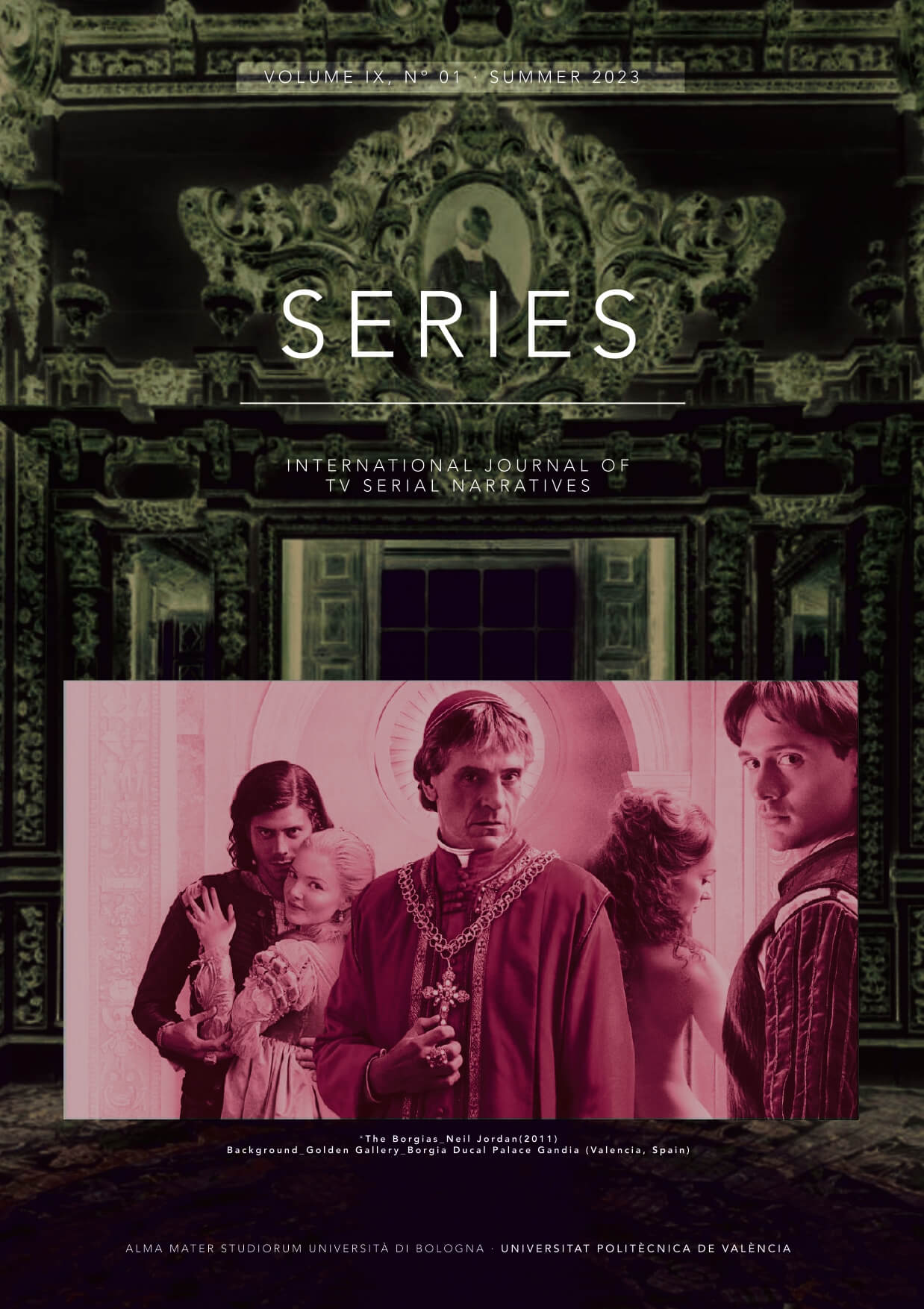Style and Staging. Aspectual Variations of Mise-en-Scène in Aaron Sorkin’s Television Serials
DOI:
https://doi.org/10.6092/issn.2421-454X/17855Keywords:
Aaron Sorkin, Mise-en-scène, Style, StagingAbstract
This study explores the matrices of serial style present in Aaron Sorkin's dramaturgical writing for television serials. The focus is on the way in which teams of directors associated with Sorkin’s productions employ solutions for the staging of these works, thereby establishing their recognizable styles. The analysis values the heuristic uses of the concept of “style”, in disciplines of art history and literature studies, aiming to understand the dynamics under which television serials results from creative encounters between dramaturgy and mise-en-scène. As proving grounds of this examination, we analyse the works of two directors of Aaron Sorkin’s show, The West Wing, evaluating the diversified manners in which these two propose solutions for the staging of Sorkin’s writing.
References
Baxandall, Michael (1985). Patterns of Intention: on the historical explanation of pictures. New Haven: Yale University Press.
Bordwell, David (2002). “Intensified Continuity: visual style in contemporary American film”. Film Quarterly 55 (3): pp. 16-28.
Bordwell, David (2005). Figures Traced in Light: on cinematic staging. Berkeley: University of California Press.
Bordwell, David (2007). Poetics of Cinema. London: Routledge.
Bourdieu, Pierre (1992). Les Règles de l’Art: genèse et structure du champ littéraire. Paris : Seuil.
Branigan, Edward (1984). Point of View in the Cinema. Berlin: Mouton de Gruyter.
Butler, Jeremy G. (2013). Television style. Nova Iorque: Routledge.
Cardwell, Sarah (2005). “Television Aesthetics and Close Analysis: style, mood and engagement in Perfect Strangers (Stephen Poliakoff, 2001)”. Style and Meaning: Studies in the detailed analysis of film, ed. Douglas Pye & John Gibbs: pp. 179-194. Manchester: Manchester University Press.
Cardwell, Sarah (2006). “Television aesthetics”. Critical Studies in Television 1 (1): pp. 72-80.
Cardwell, Sarah (2013). “Television Aesthetics: Stylistics and beyond”. Television Aesthetics and Style, ed. J. Jacobs & S. Peacock, 23-44. Londres: Bloombury.
Carroll, Noël (2003). Engaging the Moving Image. New Haven: Yale University Press.
Eco, Umberto (1968). La Struttura Assente. Milano: Bompiani.
Eco, Umberto (1979). Lector in Fabula. Milano: Bompiani.
Fahy, Thomas, ed. (2005). Considering Aaron Sorkin: essays on the politics, poetics and sleight of hand in the films and television series. Jefferson: McFarland & Co.
Ginzburg, Carlo (1989). Clues, Myths, and the Historical Method. Baltimore: Johns Hopkins University Press.
Gombrich, Ernst Hans (1960). Art and Illusion: studies in the psychology of pictorial representation. Princeton: Princeton University Press.
Iser, Wolfgang (1978). The Act of Reading: a theory of aesthetic response. Baltimore: Johns Hopkins University Press.
Lopes, Dominic. 1996. Understanding Pictures. Oxford: Oxford University Press.
Mittell, Jason (2015). Complex TV: the poetics of contemporary television storytelling. Nova Iorque: NYU Press.
Mittell, Jason (2006). “Narrative Complexity in Contemporary American Television”. The Velvet Light Trap 58, 29-40.
Peacock, Stephen & Jason Jacobs, eds. (2013). Television Aesthetics and Style. Londres: Bloomsbury Academic.
Pearson, Roberta (2011). “The writer/producer in American television”. The Contemporary Television Series, eds. Michael Hammond and Lucy Mazon. Oxford: Oxford University Press: pp. 11-26.
Philippe, Gilles (2021). Pourquoi le Style Change-t-il ? Brussels : Les Impressions Nouvelles.
Author (2016)
Autor et al. (2018).
Shanchez-Barò, Rossend (2015). La Narrativa Televisiva d’Aaron Sorkin: forma, gèneri i estil verbal. PhD Thesis in Communications Studies. Barcelona: Universitat Pompeo Fabra.
Schaeffer, Jean-Marie (1999). Pourquoi la Fiction. Paris: Seuil.
Schier, Flint (1986). Deeper into Pictures: an essay on pictorial representation. Cambridge: Cambridge University Press.
Wolfflin, Heinrich (1950). Principles of Art History. New York: Dover.
Downloads
Published
How to Cite
Issue
Section
License
Copyright (c) 2023 Benjamim Picado

This work is licensed under a Creative Commons Attribution 4.0 International License.




